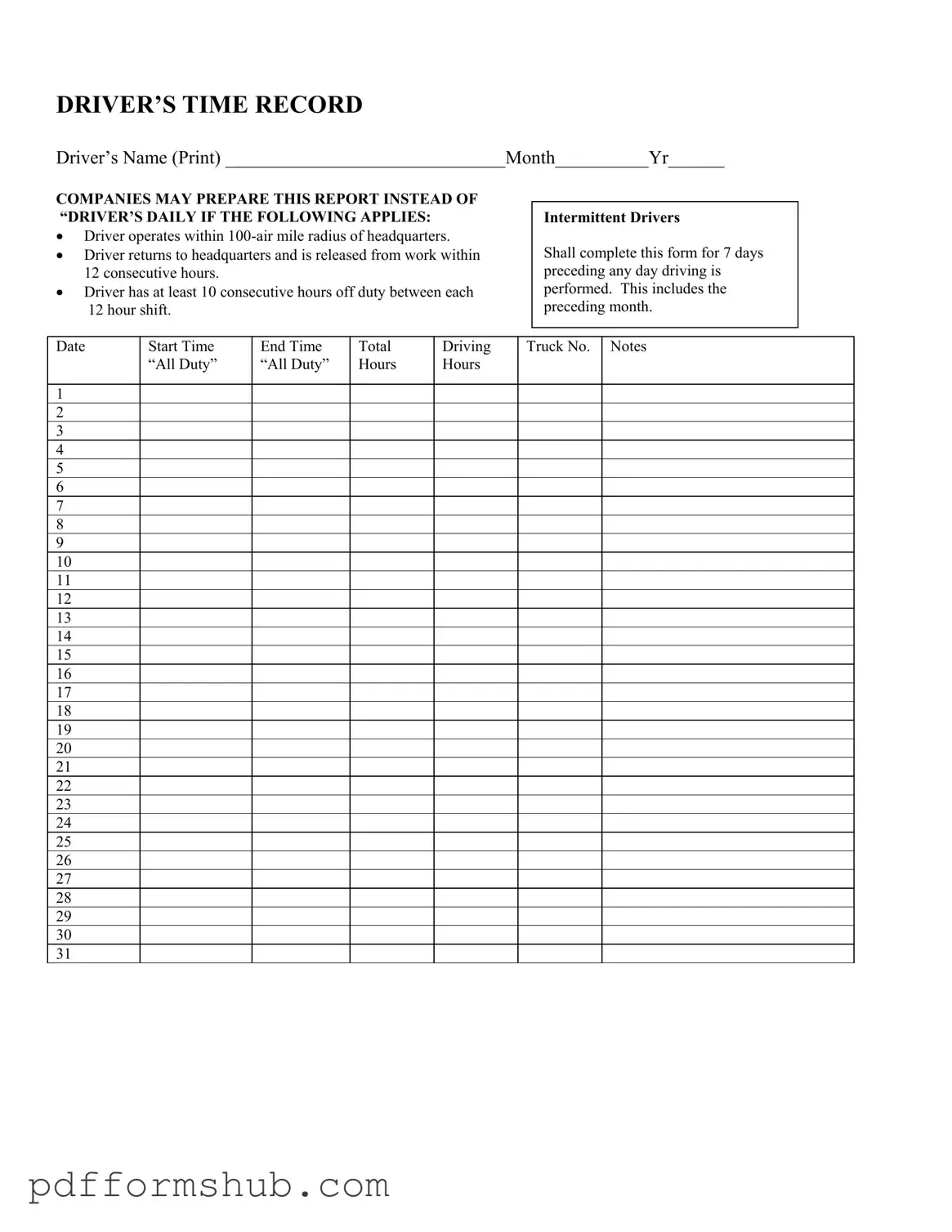The Driver Time Record form serves as an essential tool for tracking a driver's work hours and ensuring compliance with regulations. This form is particularly relevant for drivers who operate within a 100-air mile radius of their headquarters, as it allows for a streamlined reporting process when specific conditions are met. To qualify for this simplified reporting, drivers must return to their headquarters and be released from work within 12 consecutive hours, while also having at least 10 consecutive hours off duty between each 12-hour shift. For intermittent drivers, the form must be completed for the seven days leading up to any day of driving, including the preceding month. The layout of the form includes sections for the driver's name, the month and year, and a detailed log of dates, start and end times, total driving hours, truck numbers, and any additional notes. This comprehensive approach not only aids in maintaining accurate records but also plays a crucial role in promoting safety and efficiency in the transportation industry.
